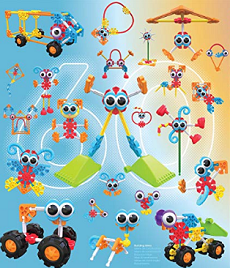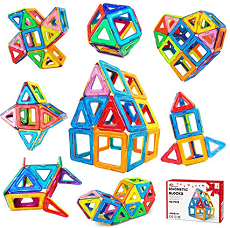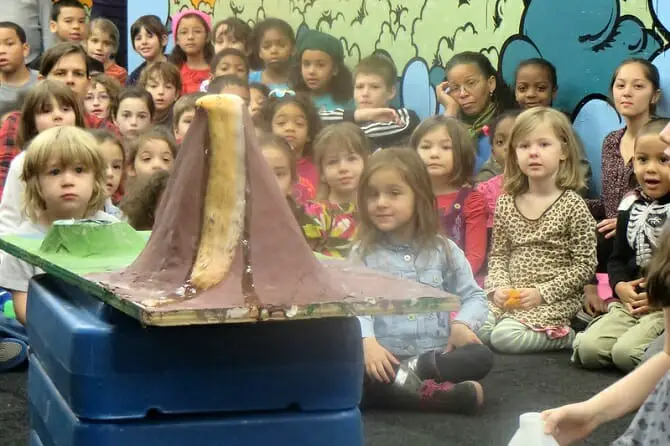I’m happy to see you all again. I love STEM kits and have used them in my classroom and with my own children for several years. In this article, you can see what is possible for the younger students. I have used many different types of kits as well as DYI and done a lot of research on the subject. This blog is intended to save you the time and effort of searching for the best STEM kits for kindergarteners.

What are STEM Kits and Why Do They Matter?
STEM kits are toys that teach science, technology, engineering and math but not necessarily all of these subjects in the same kit. Most of them focus on one or at the most two subjects with fun or entertaining activities that take the child through a step by step activity. When the “lesson” is complete the child has created a toy. Most kits offer several possible activities, so the kit can be used over and over again.
I have already written about the far-reaching benefits of STEM kits for elementary students and have had great success introducing kindergarten children to basic concepts in my classroom and with my own children. Today, the focus is on the very young. Preschoolers are wide-eyed every second they are awake and absorb a phenomenal amount of information by watching, playing and imitating. Why not take advantage of this enthusiasm to teach the rudiments of STEM?
If you have a kindergartner gradually getting attached to the TV, tablet or iPad, STEM kits are a great way to wean them away from the screen and involve into the world of interactive play. I knew my kids may complain about being bored if I offered other possibilities than an electronic screen, but it worked great. The kits, as well as the DIY items I collected, were intriguing, to say the least, and away we went into the world of science, technology, engineering and math.
The best STEM kits contain all you need to teach each of the subjects through a hands-on method. They do this through activities that can be done by one student or, even better, a group. It’s sometimes tough for kindergarteners and preschoolers to work in a group as they tend to be single-minded, but you should be careful not to do the activity for them. That would defeat the purpose of letting the little ones figure it out for themselves. Some benefits of STEM kits are:
- STEM kits make potentially complicated subjects simple and fun.
- Make life easier for teachers and parents by having everything you need to teach a STEM subject in one place.
- Come in different skill levels.
- Contain the tools to teach technology including electronics that a teacher or parent may not be familiar with.
This list contains my suggestions for the best STEM kits for kindergarten students. You may wonder why most of them focus on engineering. This isn’t because I love architecture, it’s because children at that age need to develop hand-eye coordination and fine motor skills before they can move on to solving more abstract problems. Each one of these kits is great for that. Some of them can also be used for older elementary students. All of the kits are suitable for girls and boys.
You can also get new ideas on how to use Lego STEM Activities for a Preschooler here.
My Top Pick
KID K’NEX Building Set
Age: Three years and older, but this is especially great for the littlest ones
STEM focus: Engineering
Skills developed:
- Hand-eye coordination
- Problem-solving
- Fine motor skills
- Spatial awareness
- Imagination
Also Great
hand2mind STEM Bins Kit
Age: Five years and older
STEM focus: Engineering
Skills developed:
- Hand-eye coordination
- Logical thinking
- Writing
- Problem-solving
- Creativity and imagination
Also Great
AveryLu Building Toy
Age: Three years and older
STEM focus: Engineering
Skills developed:
- Spatial and abstract thinking
- Hand-eye coordination
- Fine motor skills
- Learn colors
- Manual dexterity
- ZoZoplay STEM Learning Toy →
- Jasonwell 42 Pcs Magnetic Tiles Building Blocks Set →
- Straw Constructor STEM Building Toys →
- Light Stax Illuminated Blocks →
- KID K’NEX – Oodles of Pals Building Set →
- VIAHART Brain Flakes 500 Piece Interlocking Plastic Disc Set →
- Coogam Wooden Tetris Puzzle Brain Teasers →
- AveryLu 500 PCS Building Toy Building Blocks Bars →
- SYOSIN Construction Toy Drill →
- 163 Piece STEM Toys Kit →
- Magna-Tiles Clear Colors 100 Piece Set →
- hand2mind STEM Bins Kit by Brooke Brown →
- Marble Run Sets for Kids →
1. ZoZoplay STEM Learning Toy →

Age: Three years and older
STEM focus: Engineering
A 64-piece set of building blocks and tubes for building structures such as cars, airplanes, robots, animals and more. The durable plastic pieces are green, blue, yellow, red and purple. The pieces are designed to support creativity as well as skills. Children have to plan ahead to build things and figure out what pieces to use to be successful. It comes with a carrying case with a handle.
Skills developed:
- Develop fine motor skills
- Develop hand-eye coordination
- Improve logical thinking
- Develop problem-solving skills
2. Jasonwell 42 Pcs Magnetic Tiles Building Blocks Set →

Age: Three to eight years
STEM focus: Engineering
The kit has 42 magnetic tiles that are different sizes of squares and triangles. Each tile has two colors and rounded edges. It is constructed to be durable and withstand rough treatment. The magnets are very strong and will not break apart when a structure is built.
Skills developed:
- Learn colors
- Learn how the shapes fit together
- Learn how to plan ahead
- Develop logical thinking
- Develop hand-eye coordination
3. Straw Constructor STEM Building Toys →

Age: Three years and older
STEM: Engineering
This kit has colorful straws that can be linked together to create a wide variety of structures. Children can create bridges, tunnels, towers, boats or buildings. It comes with 300 or 800 pieces and small connectors that allow the straws to be interlocked. The plastic is BPA-free and can be washed with warm soapy water or a baby wipe. It comes with a reusable bag for storage.
Skills developed:
- Fine motor skills
- Critical thinking
- Reasoning
- Simple mechanics
4. Light Stax Illuminated Blocks →

Age: Three years and older
STEM focus: Engineering and electronics
These building blocks light up with colorful LED lights when they are stacked together. Kits come with 36 Light Stax blocks in six colors one USB smart base, three AAA batteries and one USB to DC cable. You don’t need any special wires or connectors. Kids can build robots, cars, towers and artistic sculptures that light up beautifully. The blocks have three settings with a 15-minute shut-off timing. They are compatible with Lego Duplo blocks.
Skills developed:
- Learn about lighting
- Learn about planning ahead
- Develop creativity
5. KID K’NEX – Oodles of Pals Building Set →

Age: Three years and older, but this is especially great for the littlest ones
STEM focus: Engineering
This kit contains 115 pieces that can be used to create simple things like animals or very complicated things like vehicles or robots. The pieces snap together, are brightly colored and are very cute with big inquisitive eyes. This kit is hugely popular and designed to teach STEM skills.
Skills developed:
- Hand-eye coordination
- Problem-solving
- Strengthening fine motor skills
- Spatial awareness
- Developing their imagination
6. VIAHART Brain Flakes 500 Piece Interlocking Plastic Disc Set →

Age: Five years and older, but some three-year-olds can manage it
STEM focus: Engineering
This kit contains more than 500 interlocking colorful discs and a plastic jar for storage. The plastic is non-toxic and complies with all safety regulations. It comes with a storage jar.
Skills developed:
- Critical thinking
- Three-dimensional construction
- Develop hand-eye coordination
- Develop imagination to build endless constructions
7. Coogam Wooden Tetris Puzzle Brain Teasers →

Age: Four years to eight years older children may find it too easy
STEM focus: Engineering and thinking skills
This STEM toy contains a beautifully crafted wooden Tetris Puzzle. It is safe, non-toxic, high-quality wood with no plastic or lead. It has countless possible solutions and is recommended for autistic children, but everyone likes to give it a try. It’s hard to walk by without trying to find a solution like a game of Tetris on your phone. Children can also use the pieces outside the border to create interesting shapes such as a tree, house or animal.
Skills developed:
- Increase cognitive power
- Learn spatial relationships
- Develop critical thinking
- Color and shape recognition
- Counting and analysis
8. AveryLu 500 PCS Building Toy Building Blocks Bars →

Age: Three years and older. Not recommended for children under three because of small parts
STEM focus: Engineering
This kit is for the serious builder. It has so many colorful, plastic shapes and sizes children can create large constructions or artistic items such as bouquets, animals, racing cars and many more. The plastic is non-toxic and BPA-free, and there are no sharp edges. This kit will last for years. It includes colorful shapes such as rings, ovals, straight pieces and wheels.
Skills developed:
- Develop spatial and abstract thinking
- Increase hand-eye coordination
- Develop fine motor skills
- Learn colors
- Improve manual dexterity
9. SYOSIN Construction Toy Drill →

Age: Three to eight years. Because of small parts, this kit is not suitable for children under three years.
STEM focus: Engineering and electronics
This STEM kit has an electric toy drill and toy screwdrivers as well as five colors of mosaic boards, five colors of screws and a storage bin. It comes with a booklet of suggested activities. The two AA batteries are not included. You are also provided with a genuine Philips screwdriver that is needed to open the battery cover. The plastic used in manufacture is non-toxic and has CPC certification.
Skills developed:
- Develop fine motor skills
- Learn the names of colors
- Develop abstract thinking
- Improve cognitive ability
- Increase creativity and imagination
10. 163 Piece STEM Toys Kit →

Age: Three to 10 years
STEM focus: Engineering
This kit has 163 interlocking blocks. It comes with movable wheels, wrenches, plates and nuts and bolts and promises to have the most of this type of set. Included is a full-color guide with 42 possible designs starting with the simplest and advancing to the more complicated. A storage box is included.
Skills developed:
- Learn problem-solving
- Hand-eye coordination
- Develop fine motor skills
- Learn logical thinking
- Supports imagination and creativity
11. Magna-Tiles Clear Colors 100 Piece Set →

Age: Three years and older
STEM focus: Engineering
This is a magnetic building set with colorful translucent shapes including four large and 50 small squares, 20 equilateral, 15 isosceles and 11 right-angle triangles. All the pieces snap together. The plastic is food-grade, BPA-free with no phthalates or latex.
Skills developed:
- Counting
- Fine motor skills
- Imagination and creativity
- Problem-solving
- Logical thinking
12. hand2mind STEM Bins Kit by Brooke Brown →

Age: Five years and older
STEM focus: Engineering
This is a top-of-the-line STEM set created by a teacher who understands the benefits of using STEM kits in the elementary classroom. The kit includes a Teacher Guide to help you and your students get the best use out of it. It has recording sheets, booklets and manipulatives that include wooden blocks and planks, building bricks, magnetic tiles and much more. These STEM bins will provide hours of learning and fun.
Skills developed:
- Hand-eye coordination
- Logical thinking
- Writing
- Problem-solving
- Creativity and imagination
13. Marble Run Sets for Kids →

Age: Four years and older
STEM focus: Engineering, Physics
This STEM toy lets children create a really fun structure that has four possibilities. It includes 20 glass marbles and 70 building blocks and tubes that children use to create different tracks for the marbles to race to the finish. The pieces lock together and it comes with a user guide to help you get started. They can create easy, medium and difficult runs according to their age. The kit comes with a portable storage box.
Skills developed:
- Problem solving
- Reasoning skills
- Spatial awareness
- Strategic thinking
STEM Books for Kindergarten
STEM books are books that teach science, technology, engineering and math either directly or through stories and activities. Some contain lists and examples of science experiments children can do with simple ingredients found in the home. Others have stories that enthrall children and teach how the STEM curriculum is part of the world around them. Here are two of the best:
Brain Games Kids: Kindergarten Activity Workbook →

Published by Editors of Phoenix International Publications, this is a spiral-bound book that contains 301 simple and common questions young children ask about the world around them. The answers are age-appropriate and teach language arts, math, social sciences, science, fine arts, Spanish, French and physical and emotional development. The fold-over format allows children to give their own answers to questions before finding out what the book says.
The Everything Kids’ Science Experiments Book →

Written by Tom Robinson and published by Everything, unknown edition (October 1, 2001) this paperback book covers a vast science syllabus with a few household items. All the experiments have been tested and work beautifully. The introduction to each experiment relates to unusual questions or everyday activities that you may take for granted. This approach draws in the learner because they know something fun is about to happen. It covers the whole STEM curriculum. No prior science education or special equipment is needed. The book tells how to boil ice, measure gravity, float water and challenge the everyday life.
Easy STEM Activities for Kindergarten-Aged Children
Along with STEM kits that provide all the things you need for the specific activity, you can introduce activities to your kindergarteners with things you have at home or can get in a grocery store. They’re not only educational but they are fun, and this is the glue that makes the science, technology, engineering and math stick in their minds.
Have a look at this article to get some ideas for DIY STEM projects that are easy enough for preschoolers. It gives examples of experiments that even the youngest can understand along with the scientific explanation. For example, chemical analysis with coffee filters used to separate colors in pigment. It’s amazing how many colors it takes to create exactly the color of a marker. Children can observe a chemical reaction by watching what salt does to an ice cube.
Another example of a DIY STEM kit for preschool children is, believe it or not, toothpicks and marshmallows. Yes, the marshmallows hold the toothpicks together and children can build all sorts of 3D things from cars and bridges to tall towers and castles.

Vinegar and baking soda are the time-tested chemical reaction of acid and base that never fails to wow! kids. Whether it is a volcano erupting or bubbling food color on a plate you can think of many ways to combine the two that are fun to do and watch.

Combining liquids in a tall glass is an activity that is fascinating even for adults. It demonstrates density and looks fantastic. The oil floats on top of the water because it is less dense than water. If you drop some colored ice cubes into the oil, the ice will slowly melt and the colored water will burst into the water beneath the oil. It’s real and you can touch it and do it over and over again with different colors. It’s much better than watching it on a screen.
Here is a video of a STEM lesson for kindergarten students. It gives a clear picture of how a science teacher taught force, push and pull to preschoolers.
They created a pulley out of a cardboard box, plastic water bottles and string. One of the things I really like about this particular video is there was a real need for a pulley to help get heavy library books up several stories. The children created the solution. They also made a mini-golf course to understand force and direction as well as other items.
You will find some amazing ideas that may also teach you some science in this article. If you still aren’t convinced, this post may help as it gives guidance for the science behind the fun and interesting experiments.
Final Thoughts
STEM activities simply help make children aware of what they already know. Kindergarteners know if they hit a ball with a stick, it will fly away, and the harder they hit the ball the further it will go. The STEM curriculum makes it easy for teachers to open the world of science, technology, engineering and math through fun activities. I hope I have helped you find ways to incorporate STEM activities in your kindergarten classroom.
Last Updated on April 28, 2025 by Emily
- Facebook9
- Twitter21
- Pinterest67
- 97shares





Hello Emily,
I have taught kindergarten for three years and would like to introduce STEM kits to my class. My students regularly use small blocks and LEGOs, modeling clay and large, brick-sized blocks outdoors. I want to introduce STEM kits so my students can experience more than what they create themselves. While I believe it’s important to allow freedom of imagination, STEM kits offer another dimension of critical thinking and problem solving. Please suggest at least two STEM kits for kindergartners that you think would suit my needs. Thank you.
Hello,
It’s true, STEM kits take children beyond the realm of imagination and infuse their thinking with science. I would recommend two completely different kits, not just to give variety but to attract different types of minds. First, the KID K’NEX – Oodles of Pals Building Set, which is suitable for children three years and older. It has all the benefits of hand/eye coordination and problem-solving while allowing the children to create a cute creature of their imagination. Robotics are the most popular STEM kits for older children, and this kit, while not as sophisticated, lets them create a friend. I especially like the googly eyes.
The other one I recommend is Light Stax Illuminated Blocks. Suitable for children three years and older, these shining blocks help develop fine motor skills, critical thinking and simple mechanics. It’s really thrilling for the little ones to see the blocks light up as they create a structure. There are many STEM kits for young children from which to choose, but since you are just entering the world of STEM, these are two good starting points.